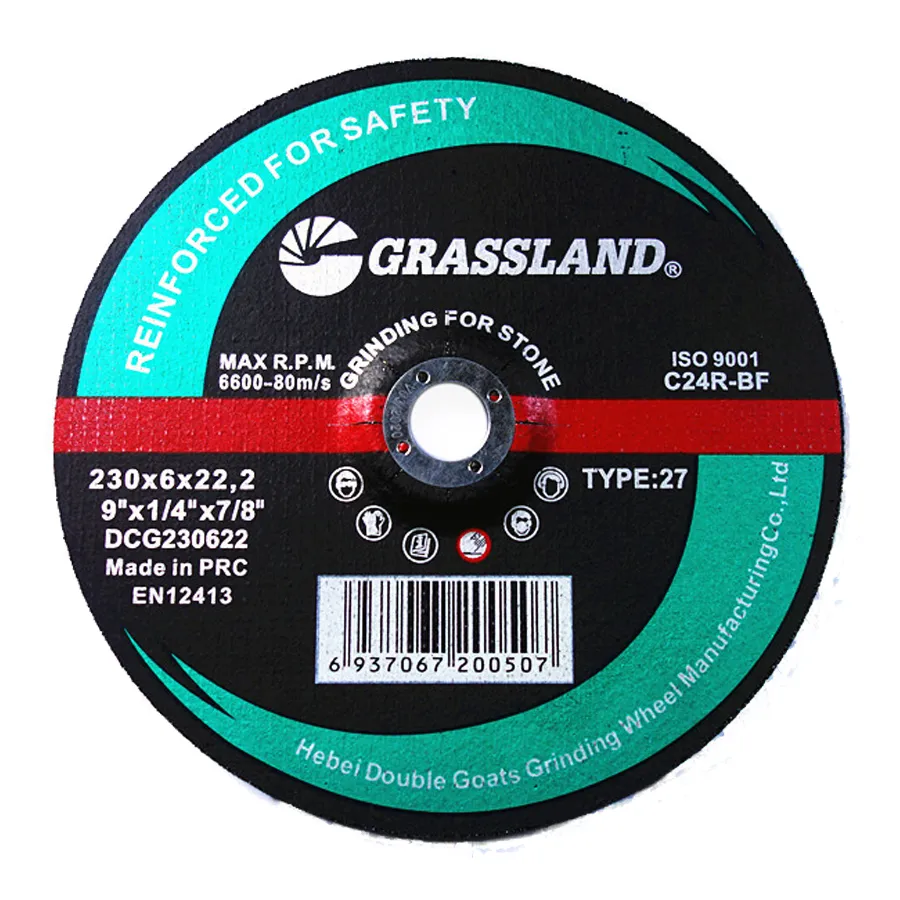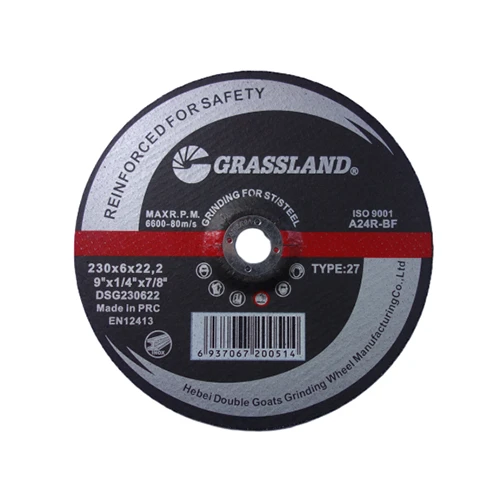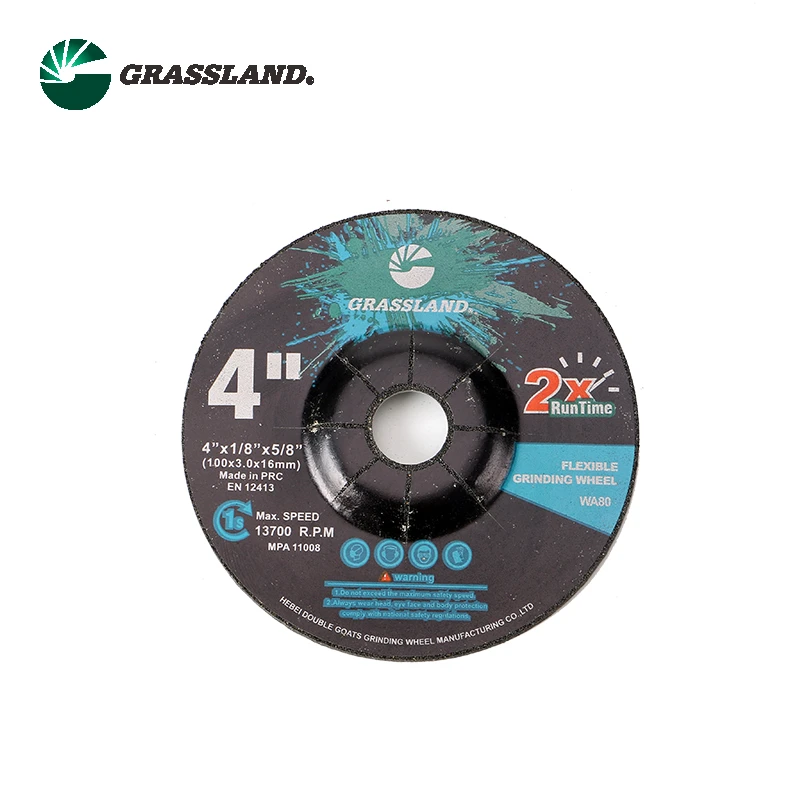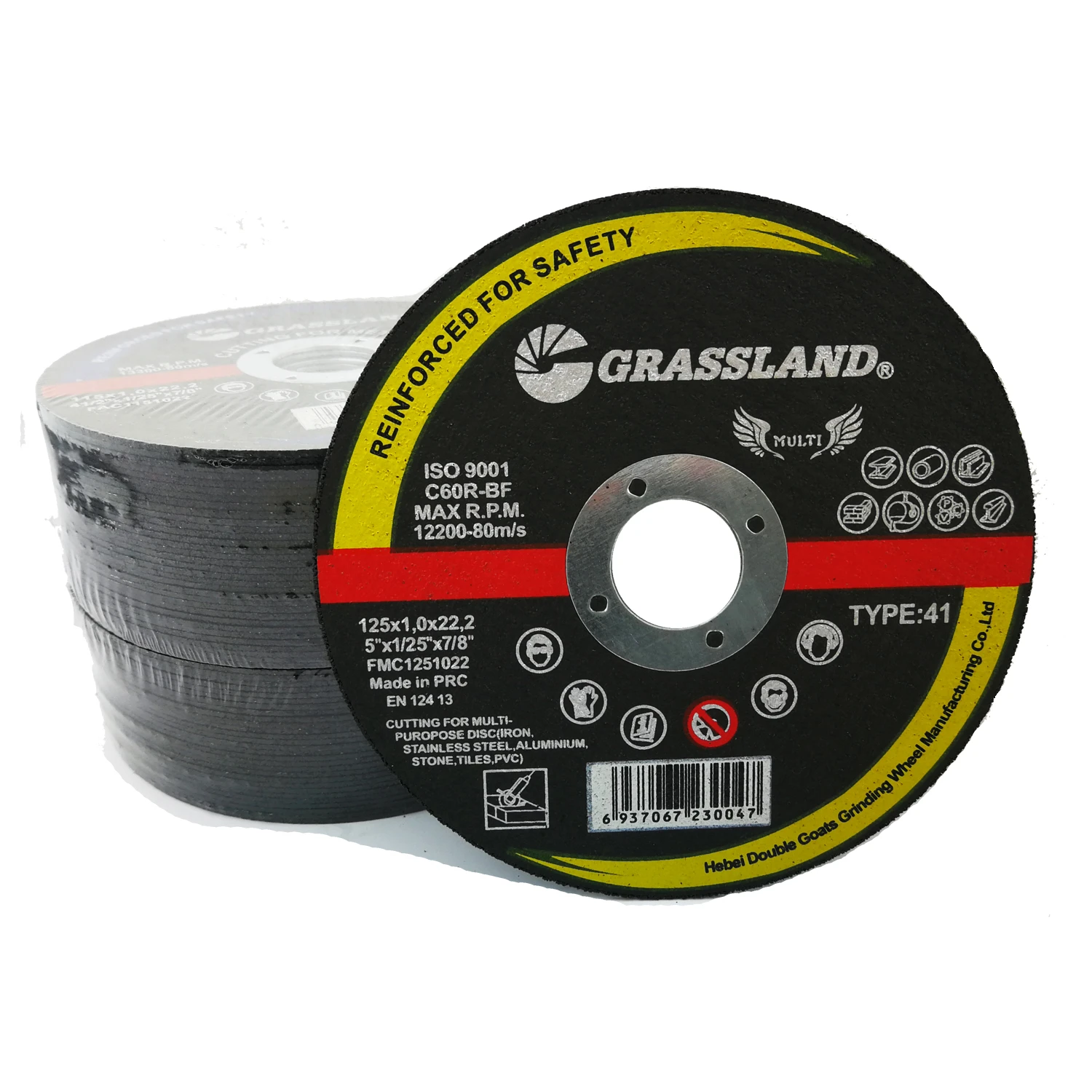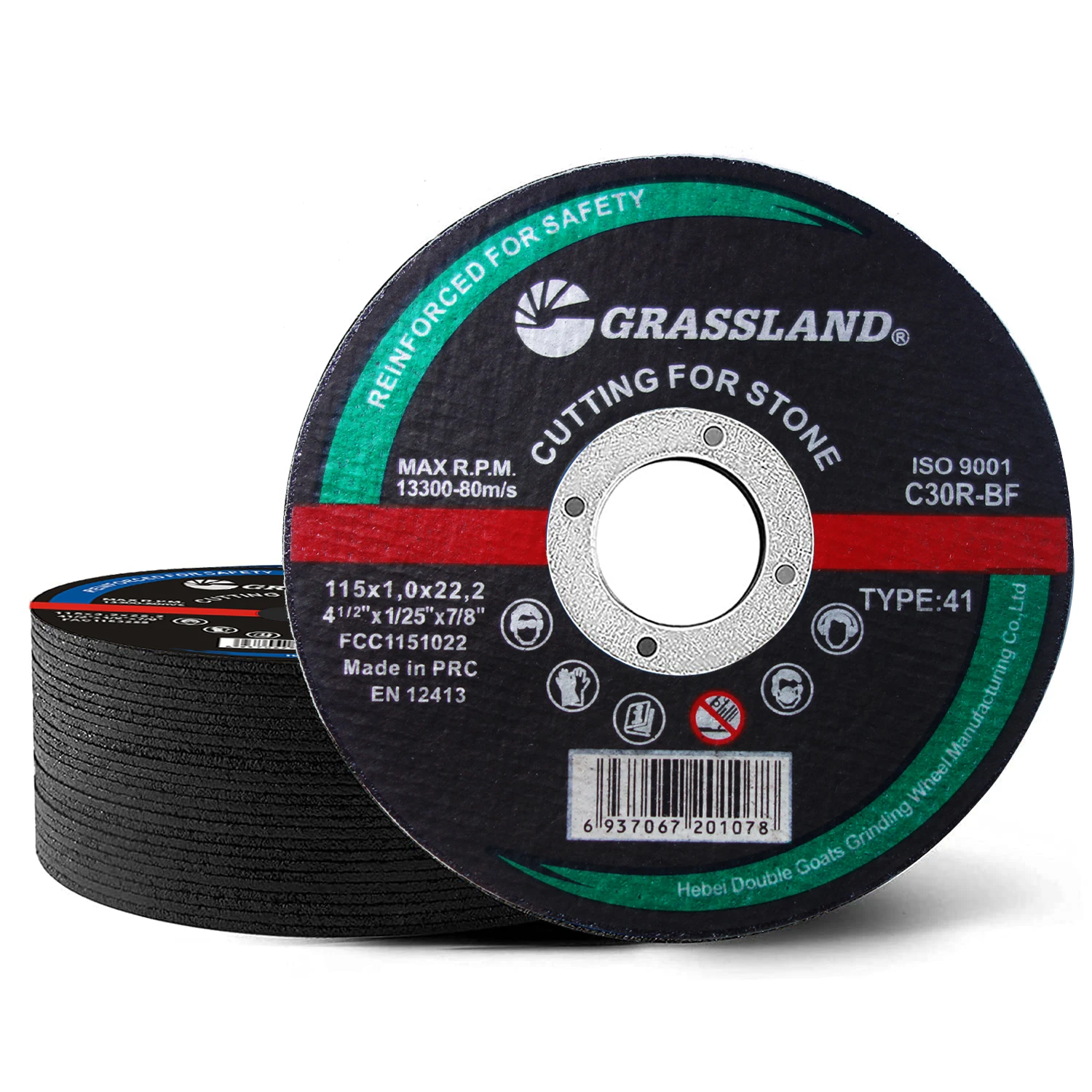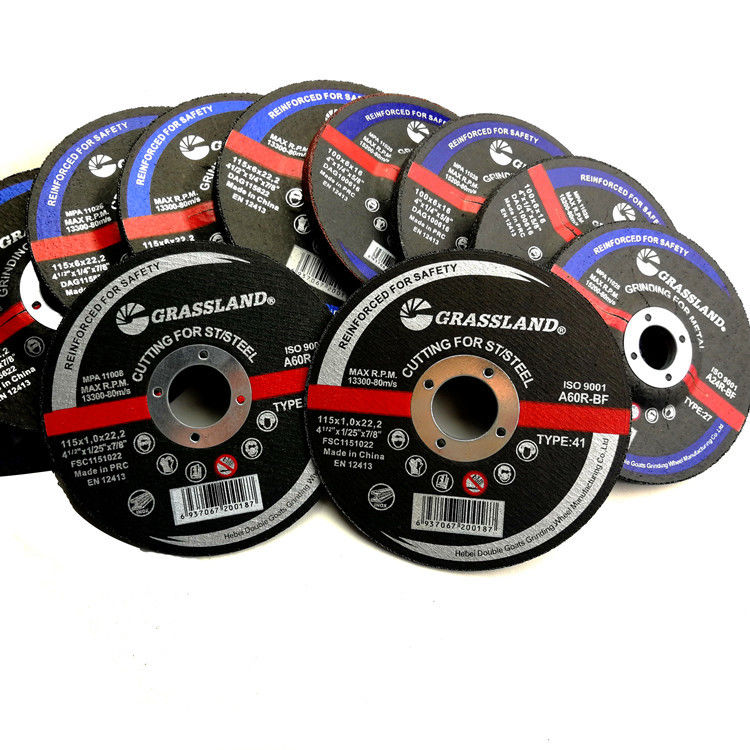- Fundamentals of grinding wheel materials
- Critical performance properties in modern abrasives
- Global manufacturers and specification comparison
- Innovations in stainless steel grinding applications
- Custom formulation processes for industrial solutions
- Real-world case studies across key industries
- Future material technology development vectors
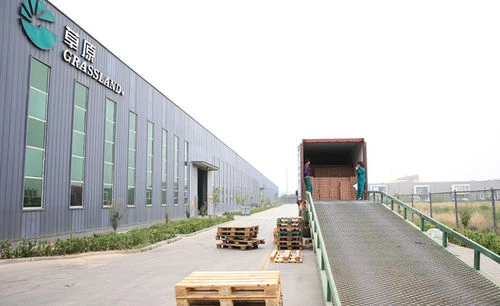
(grinding wheels material)
Understanding Grinding Wheels Material Composition
Modern grinding wheels contain complex combinations of abrasive grains, bonding agents, and pore structures that collectively determine performance characteristics. The primary abrasive particles typically include aluminum oxide (Al₂O₃), silicon carbide (SiC), cubic boron nitride (CBN), or diamond crystals. These grains function as microscopic cutting tools, with material hardness measured on the Knoop scale ranging from 2,000 HK for alumina up to 7,000 HK for synthetic diamond.
Bonding materials act as the matrix holding abrasive grains in position, with vitrified glass bonds comprising 57% of industrial wheels according to Federation of European Producers of Abrasives (FEPA) statistics. Resinoid bonds (phenolic resins) account for 32% of market share, while metallic bonds like sintered nickel make up the remaining 11%. Proper selection of grinding wheels material
directly impacts stock removal rates, with high-performance formulations removing stainless steel up to 38% faster than conventional abrasives.
Abrasive Performance Properties and Specifications
Engineers evaluate grinding wheels against five critical parameters that collectively define operational efficiency. Material hardness directly correlates to wheel longevity, with aluminum oxide wheels maintaining form integrity during prolonged stainless steel grinding operations. Industry testing reveals that CBN wheels maintain dimensional stability up to 1,250°C - 68% higher than conventional aluminum oxide abrasives.
Thermal conductivity prevents workpiece damage by dissipating heat efficiently. Diamond-enhanced wheels demonstrate conductivity coefficients of 2,000 W/mK compared to alumina's mere 30 W/mK. Standardized grading systems include:
- ANSI B74.13 grain size classifications from 8 (coarse) to 1200 (ultra-fine)
- ISO 6104 bond strength ratings (A=soft, Z=hard)
- Structure density grades 0-14 (open to dense)
Manufacturer Comparison Table
| Manufacturer | Abrasive Material | SS Grinding Rate | Wheel Life | Cutting Speed | Cost Index |
|---|---|---|---|---|---|
| Norton Vortex | Ceramic alumina | 45 in³/min | 3,200 parts | 120 m/s | 92 |
| Saint-Gobain | Hybrid CBN | 38 in³/min | 7,500 parts | 80 m/s | 240 |
| 3M Cubitron II | Precision ceramic | 51 in³/min | 4,100 parts | 110 m/s | 175 |
| Tyrolit Sigma | Reinforced alumina | 42 in³/min | 3,800 parts | 100 m/s | 105 |
Recent third-party abrasion tests reveal Norton's SG alumina wheels achieve 24% higher G-ratios than conventional wheels when processing 304 stainless steel. Industrial benchmarks show premium abrasives reduce per-part grinding costs by up to 41% despite higher initial investment.
Advanced Grinding Wheel for SS Material
Precision grinding of stainless steel requires specialized formulations that overcome work hardening tendencies. Austenitic grades (304/316) necessitate zirconia-alumina composites which deliver 2.7× the lifespan of standard wheels when processing these corrosion-resistant alloys. Premium grinding wheel for SS material incorporate several critical design elements:
- Microcrystalline aluminum oxide grains that fracture progressively
- Ferrite detection additives preventing contamination
- Heat-conductive fillers that maintain workpiece temperatures below 150°C
Industry applications demonstrate that resin-bond CBN wheels increase productivity on martensitic stainless by 60% while reducing coolant consumption by up to 30%. Aerospace processors using specialized duplex stainless formulations report 0.8-micron surface finishes meeting AS9100 specifications for flight components.
Customized Grinding Solutions Formulation
Manufacturers requiring specialized abrasives undergo a comprehensive specification process to match grinding wheels material to exact operational parameters. Initial assessment includes workpiece metallurgical analysis, grinding pressure measurements, and thermal imaging of contact zones. Technical specifications encompass:
- Abrasive concentration gradients across wheel profile
- Site-specific bond hardness variations
- Coolant permeability optimization (minimum 23% porosity)
- Runout tolerance thresholds below 0.01mm
Automotive manufacturers implementing custom-formulated creep-feed wheels for camshaft production achieved 2.6µm profile consistency while reducing wheel consumption by 17 tons annually. Bespoke solutions typically require 11-14 weeks development time with prototyping iterations based on accelerated wear simulations.
Application Performance Results
Precision gear manufacturing exemplifies how advanced types of grinding wheel material transform production economics. Implementing ceramic-reinforced wheels for hard finishing resulted in:
- 57% reduction in cycle time for aerospace ring gears
- Surface roughness improvement from Ra 0.65 to Ra 0.32µm
- Annual abrasive cost savings exceeding $290,000 at a German tier-one supplier
Tool and die applications report extended dressing intervals of 150-200 workpieces with CBN wheels versus 30-40 pieces with conventional abrasives. Medical implant manufacturers confirm zirconia-toughened alumina wheels produce cobalt-chrome knee joints with surface integrity meeting ASTM F75 standards at 94% first-pass yield rates.
Material Innovation Roadmap for Grinding Wheels
The $32B global abrasives industry is pursuing development of fourth-generation grain technologies to address emerging manufacturing challenges. Polymer nanotube reinforcement promises to increase bond strength by up to 400% while maintaining fracture toughness. Leading R&D initiatives focus on:
- Self-sharpening grain architectures utilizing geometric triggers
- Functional gradient materials (FGMs) with hardness transition zones
- Intelligent bonds incorporating microsensors for wear monitoring
Field trials of diamond-seeded aluminum oxide demonstrate potential 85% reductions in dressing frequency while maintaining profile consistency below 5-micron deviation. As composites become more prevalent in aerospace and automotive sectors, grinding wheels material formulations are adapting with nickel-coated abrasives that provide sufficient matrix clearance during carbon fiber processing. Manufacturers upgrading to premium abrasives consistently report ROI within 7.2 months based on production output gains.
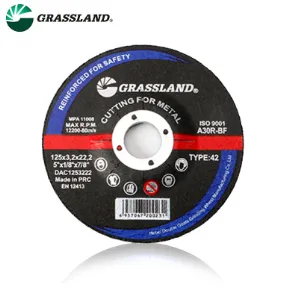
(grinding wheels material)
FAQS on grinding wheels material
Q: What materials are commonly used in grinding wheels?
A: Grinding wheels are typically made from abrasive materials like aluminum oxide, silicon carbide, ceramic alumina, or diamond/cubic boron nitride (CBN). These materials vary in hardness and heat resistance to suit different applications. The bonding agent (e.g., vitrified or resin) also impacts performance.
Q: Which grinding wheel material is best for stainless steel (SS)?
A: Silicon carbide or ceramic alumina wheels are preferred for stainless steel due to their sharp cutting edges and heat resistance. Avoid aluminum oxide wheels, as they can overheat SS. Use finer grits for polished finishes and coarser grits for heavy material removal.
Q: How do bonded abrasive materials affect grinding wheel performance?
A: Bonded materials (e.g., vitrified, resin, or metal bonds) determine wheel durability and cutting speed. Vitrified bonds suit precision grinding, while resin bonds handle higher speeds. Metal-bonded wheels with diamond/CBN abrasives excel in hard materials like alloys.
Q: Can the same grinding wheel work for multiple materials?
A: Aluminum oxide wheels are versatile for carbon steel and alloys but perform poorly on SS or hardened metals. For mixed materials, ceramic alumina wheels offer broader compatibility. Always check manufacturer guidelines to avoid wheel damage or unsafe conditions.
Q: What factors determine grinding wheel selection for stainless steel?
A: Prioritize wheel hardness, abrasive type (e.g., silicon carbide), and grit size based on SS grade and surface finish requirements. Coolant-compatible wheels reduce heat buildup. Low-porosity designs minimize clogging from SS's gummy texture.
Post time:Jun - 01 - 2025







